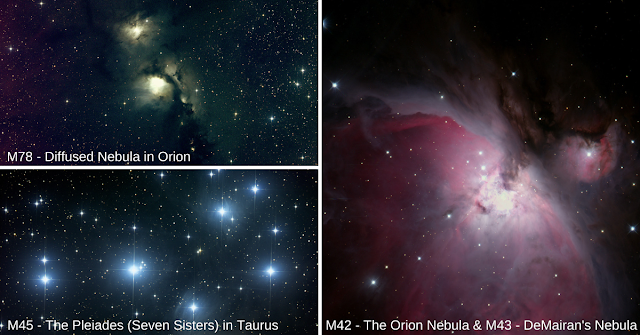Barnstable High School Senior Astronomy students, AKA, "Astro Junkies", are recently focused on a unit called “The Sky Show” which challenges each student to learn the taxonomy of the heavens.
Similar to Zoology, where each organism is assigned a Class, Phylum, Order, Family, Genus, and species classification, each object in the nighttime sky is given a classification designation as well. As students learn about open star clusters, globular star clusters, spiral galaxies, elliptical galaxies, irregular galaxies, double stars, planetary nebulae, emission nebulae, reflection nebulae, dark nebula, variable stars, planets, moons, asteroids, and comets, they will select a specific celestial object that they would like to research and image with a partner. Together, they will search the skies, using the website Telescopius.com, to find “that image” that speaks to them and their specific interests.
Insight Observatory provides a wonderful opportunity for students to learn about deep-space objects, telescopes (reflectors vs. refractors), and the nighttime sky (in both celestial hemispheres). Students truly enjoy being part of the imaging process. Ownership, which is key to learning, helps create crystallizing memories that will resonate with students for many years to come. If educators are thought of as being in the “memory-making business,” then Astronomy provides the magic for making this happen.
Michael Gyra - Astronomy Teacher, Barnstable High School, Barnstable, MA
A special thank you to Mr. Gyra and his senior astronomy students, AKA, "Astro Junkies", for utilizing Insight Observatory's Astronomical Telescopes for Educational Outreach for the second consecutive school year with their class projects. If you are an educator interested in accessing Insight Observatory's ATEO remote telescope network for a classroom project using its intuitive Educational Image Request (EIR) form, please Contact Us.
Read More
 |
| Barnstable High School astronomy students study the use of Insight Observatory's Astronomical Telescopes for Educational Outreach (ATEO). |
Similar to Zoology, where each organism is assigned a Class, Phylum, Order, Family, Genus, and species classification, each object in the nighttime sky is given a classification designation as well. As students learn about open star clusters, globular star clusters, spiral galaxies, elliptical galaxies, irregular galaxies, double stars, planetary nebulae, emission nebulae, reflection nebulae, dark nebula, variable stars, planets, moons, asteroids, and comets, they will select a specific celestial object that they would like to research and image with a partner. Together, they will search the skies, using the website Telescopius.com, to find “that image” that speaks to them and their specific interests.
 |
| Barnstable High School astronomy students research and select their deep-sky object to image on the ATEO remote telescope network. |
Insight Observatory provides a wonderful opportunity for students to learn about deep-space objects, telescopes (reflectors vs. refractors), and the nighttime sky (in both celestial hemispheres). Students truly enjoy being part of the imaging process. Ownership, which is key to learning, helps create crystallizing memories that will resonate with students for many years to come. If educators are thought of as being in the “memory-making business,” then Astronomy provides the magic for making this happen.
Michael Gyra - Astronomy Teacher, Barnstable High School, Barnstable, MA
 |
| More images of deep-sky objects were taken by the Barnstable High School senior astronomy students. Sh2-279 was imaged on ATEO-3, M31 was imaged on ATEO-2A and IC 1848 was imaged on ATEO-1. |
A special thank you to Mr. Gyra and his senior astronomy students, AKA, "Astro Junkies", for utilizing Insight Observatory's Astronomical Telescopes for Educational Outreach for the second consecutive school year with their class projects. If you are an educator interested in accessing Insight Observatory's ATEO remote telescope network for a classroom project using its intuitive Educational Image Request (EIR) form, please Contact Us.






